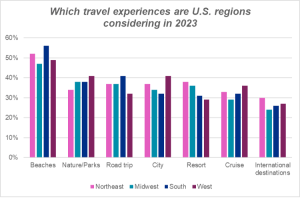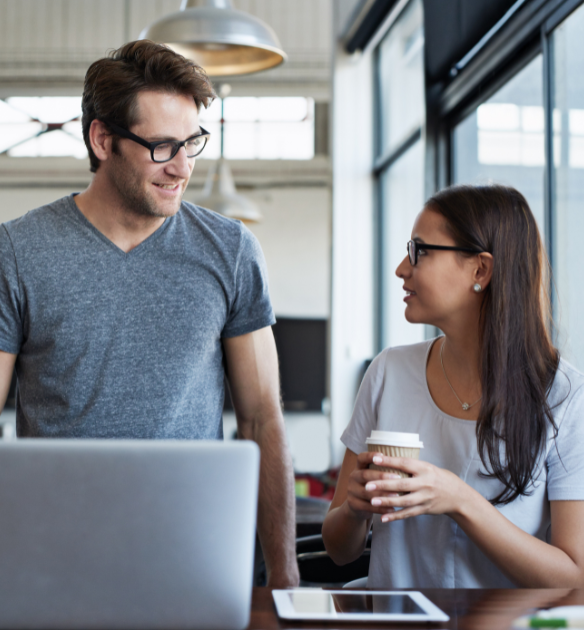Domestic Travel is Recovering to Pre-Pandemic Levels
After years of pandemic-driven slowdowns, the travel industry is predicted to make a full recovery as consumers are already planning trips for 2023.

 A recent report by Skift showed the global travel industry is currently just 15% below 2019 levels, while domestic travel spend in the U.S. will be close to fully recovered by the end of 2022.
A recent report by Skift showed the global travel industry is currently just 15% below 2019 levels, while domestic travel spend in the U.S. will be close to fully recovered by the end of 2022.
As destination marketing organizations (DMOs) prepare to reel in more travelers in the new year, we surveyed over 1,000 Americans to learn more about their 2023 travel plans for international and domestic trips. Here are some of the highlights:
Americans are traveling shorter distances next year.

Our survey showed travelers plan to travel less than 2,000 miles next year. Depending on where they are in the country, a three- to four-hour direct flight can get travelers a change in scenery domestically or close to home in Canada and the Caribbean.
Those that are traveling more than 3,000 miles are more likely to travel from the West Coast or Southern states.
In 2019 and prior years, the U.S. had been the largest destination for international travelers but now relies mostly on domestic travelers, according to Skift. As DMOs adapt to travelers staying closer to home, planning domestic campaigns can attract more visitors in 2023.
Beaches and tropical destinations are top of mind for 2023.
Americans are headed to warmer destinations in the new year as more than half of travelers are planning beach vacations. Still, they are not venturing too far abroad for these tropical trips, as the top two destinations include Florida (52%) and the Caribbean (43%).
 Travelers who are considering beach destinations are most likely to travel from Southern and Northeastern states. West Coast travelers are most likely to consider nature and city destinations than other regions.
Travelers who are considering beach destinations are most likely to travel from Southern and Northeastern states. West Coast travelers are most likely to consider nature and city destinations than other regions.
Destinations in the “domestic Caribbean” such as the Florida Keys, Puerto Rico and U.S. Virgin Islands make for easy trips that don’t require a passport or a long flight.
Generationally, Millennials and Boomers are more interested in trips to closer destinations compared to Gen Z travelers who are open to traveling farther abroad. They are also more interested in staying at resorts compared to older generations.
As 2023 kicks off with more northerners headed south, DMOs can entice these audiences with more all-inclusive experiences while keeping shorter travel distances in mind.
Social media channels are filled with travel ads.
While social media channels are a great tool for finding travel inspiration, it’s no secret the space is saturated with destination marketing ads. More than half of Americans said they see travel ads primarily on social media channels.
Still, there are some variations in where generations see the most ads. Millennials said they tend to see travel ads on blogs and publications in addition to social ads, while Gen X is still finding ads in print publications. Boomers tend to see ads on streaming services and cable the most out of all four generations.
As destination marketers look for new ways to stand out from the competition, using content partners can help increase brand exposure and reach highly engaged target audiences through affiliate strategies.
To learn more about how travelers are booking trips and how to grow unique audiences through performance marketing, download our latest report Engaging Today’s Travelers.


